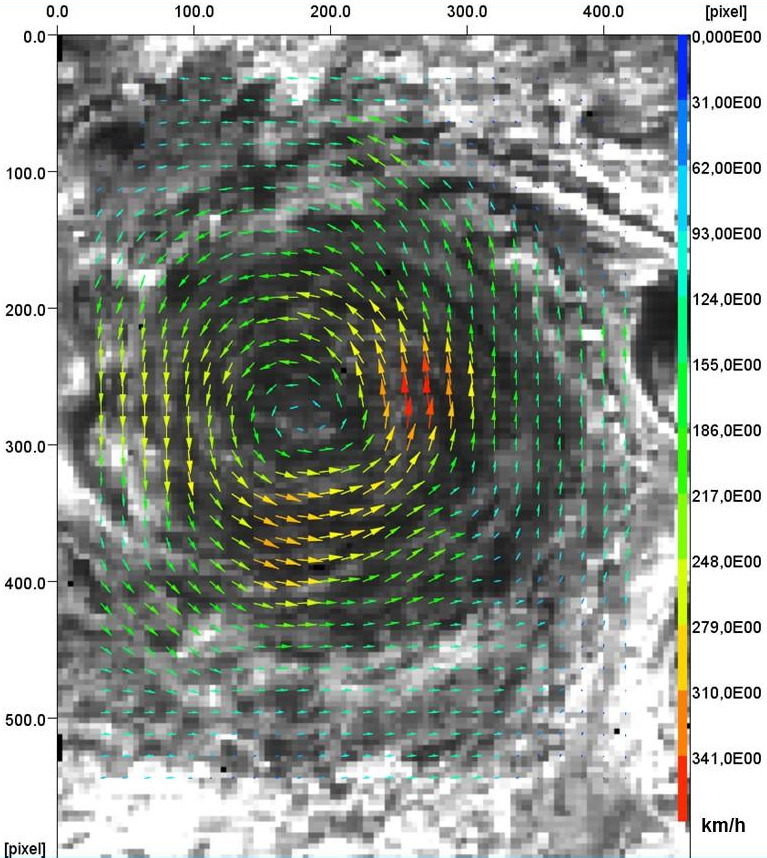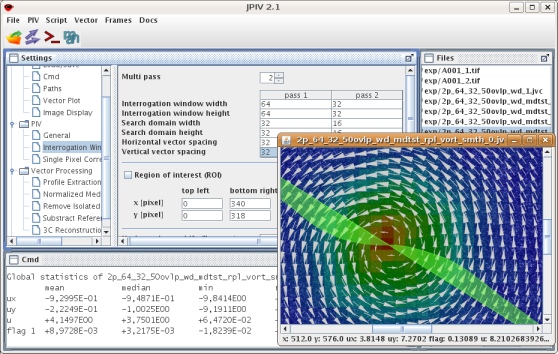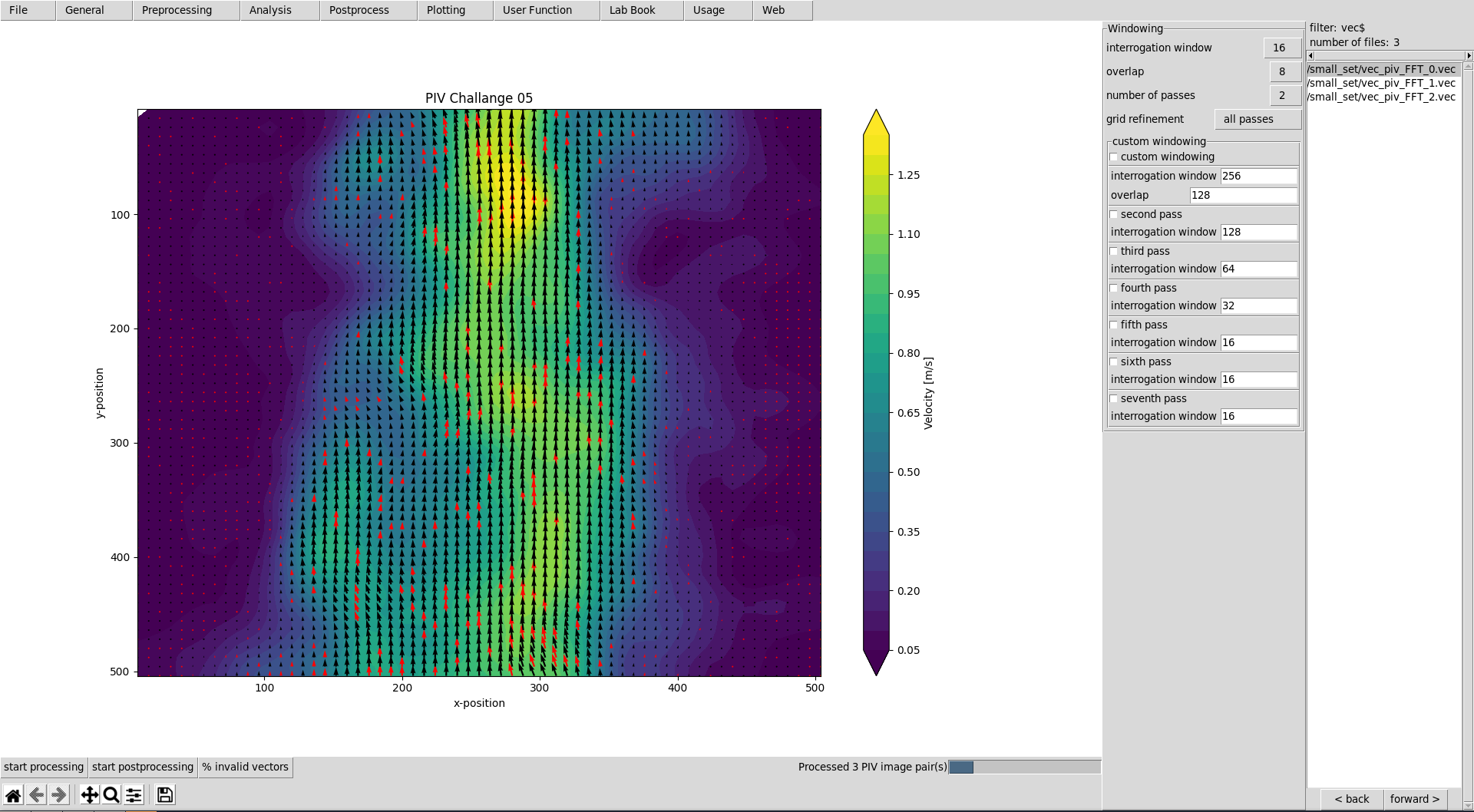Particle Image Velocimetry
JPIV
What is PIV?
Particle Image Velocimetry (PIV) is an optical flow measurement method. The flow is visualized by seeding it with tracer particles, or just using natural seeding, if present. From at least two successive images, an image correlation method extracts the velocity information. You end up with a vector field, showing magnitude and direction of the flow. As an example, I like the estimation of wind speeds on Jupyter, that J. M. L. Moriconi calculated with the help of JPIV.

Figure 1: Estimation of wind speeds on Jupiter (J. M. L. Moriconi 2017).
What is JPIV?
JPIV is an open source software, entirely written in Java, that I developed during my PhD at Delft Technical University.

Figure 2: The JPIV user interface.
Why use JPIV?
JPIV has a couple of features, that are absent in most commercial PIV programs. Examples are rectangular interrogation windows, single pixel ensemble correlation or an extremely flexible way to incorporate your own scripts or routines.
Check out the following video for a short demonstration of JPIV and its main features.
We use JPIV at our laboratory, especially, because of speed. JPIV itself is not very fast, the opposite is the case, sad enough. But if you want to evaluate a whole bunch of PIV measurements, we launch a couple of JPIV instances in parallel on a computer cluster. This makes the wohle evaluation much faster than a sequential evaluation with a commercially licenced software.
OpenPivGui
Meanwhile, some scientists worldwide started collaborating on PIV algorithms, creating the OpenPIV cosmos. For educational purposes, we contributed a simple GUI to ease most of the standard PIV workflows.

Find a complete guide to OpenPivGui at ReadTheDocs. Installation is as easy as typing:
pip install openpivgui
Launch the GUI by:
python -m openpivgui.OpenPivGui
There is an introductory video, too.
Have fun!